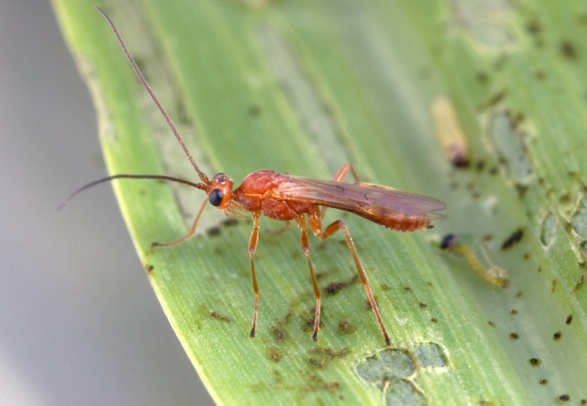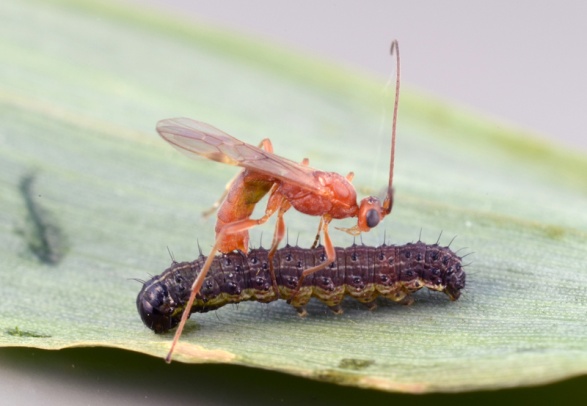
Aleiodes laphygmae (Viereck)
(Insecta: Hymenoptera: Braconidae)
Aleiodes laphygmae, also called the armyworm mummy wasp, parasitizes early instars of noctuid caterpillars, including cutworm and armyworm species. It is naturally associated with open, grassy meadows but also occurs in agroecosystems and forest areas.
The adult wasps are 4 to 5 mm long and orange brown. The long antennae are slightly darker, and the wings are transparent. Parasitized host mummies usually are smooth, light brown or gray, and attached flat to the substrate.
As endoparasitoids, larvae of Aleiodes laphygmae complete their development and metamorphosis inside the host larva. The host larva continues to feed and move for a while and then mummifies. Emerging parasitoid wasps leave the mummy through an exit hole.
Aleiodes laphygmae occurs in the southeastern United States from Florida to South Carolina and westward to Texas, and it has been introduced to Hawaii.
Images
To save the Web-optimized images shown below to your hard drive:
PC users: right click to "Save Picture (or Image) As..."
Mac users: click and drag to your desktop.

Adult wasp of Aleiodes laphygmae (Viereck)
(Photographer: Lyle Buss, University of Florida)

Fall armyworm, Spodoptera frugiperda, mummies parasitized by Aleiodes laphygmae (Viereck)
(Photographer: Lyle Buss, University of Florida)

Female wasp of Aleiodes laphygmae (Viereck) ovipositing into a larva of fall armyworm, Spodoptera frugiperda
(Photographer: Lyle Buss, University of Florida)